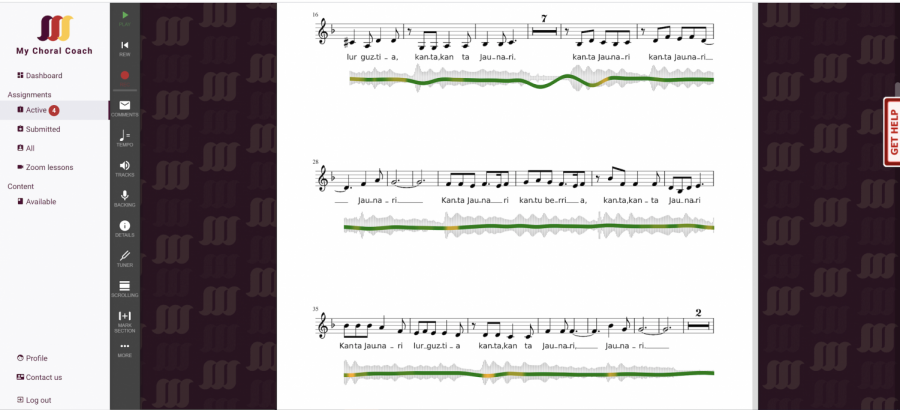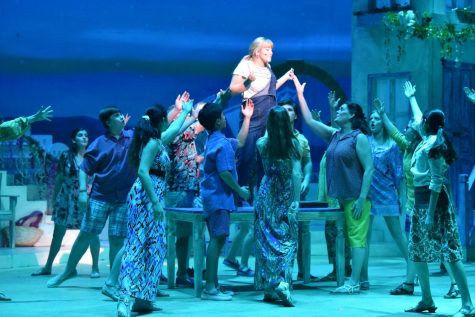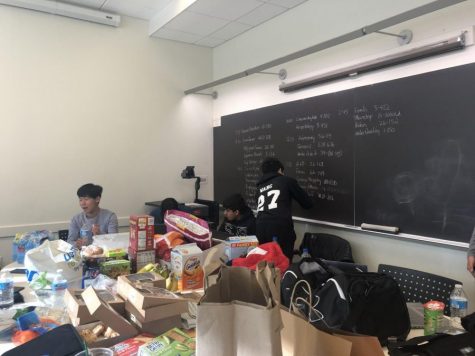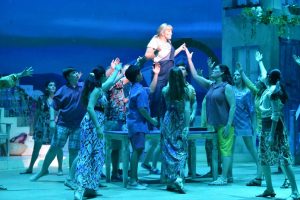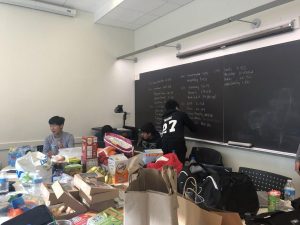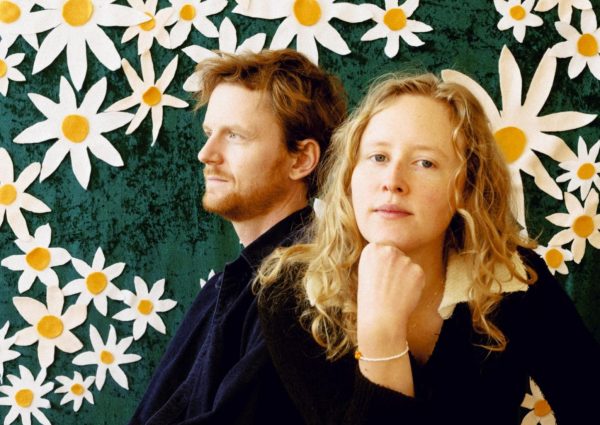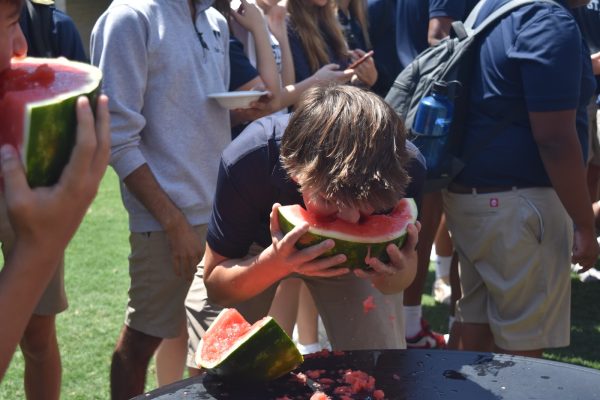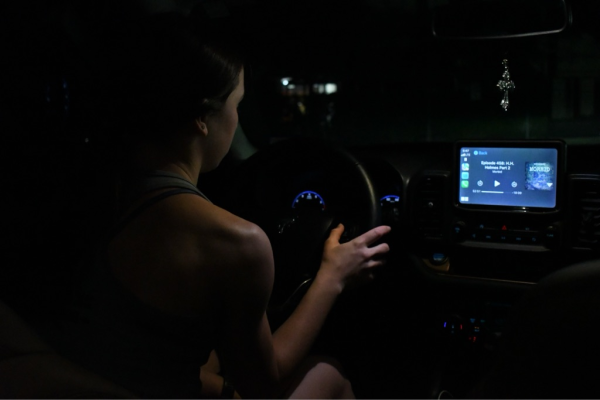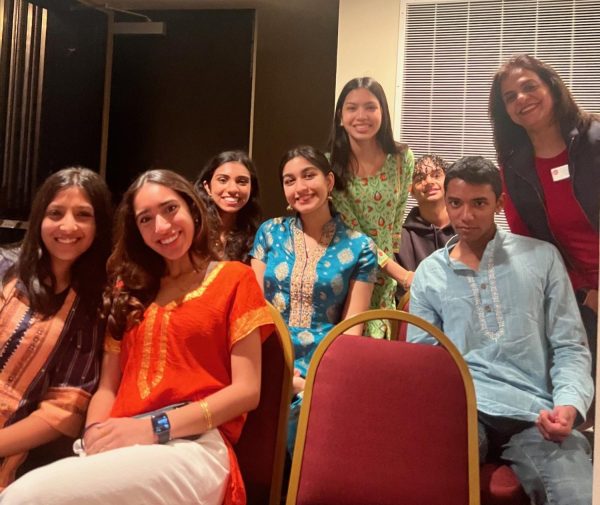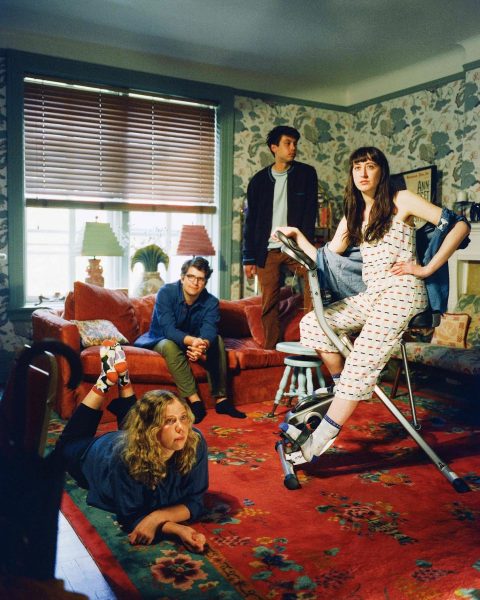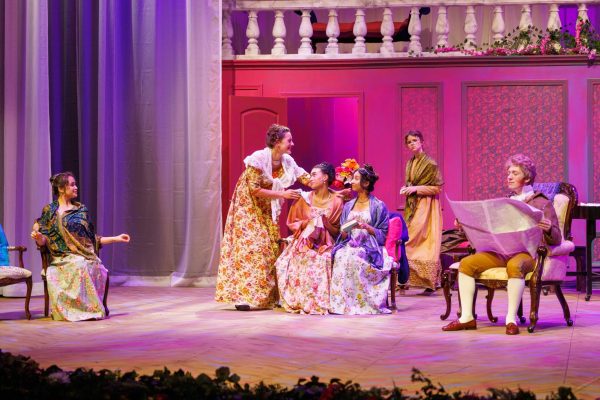Performing ensembles adapt to Low Density Campus Plan with virtual music platforms
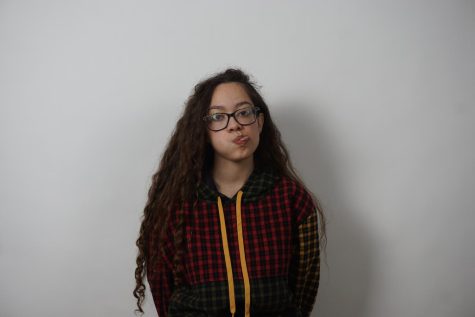
More stories from Lydia Gafford
December 8, 2020
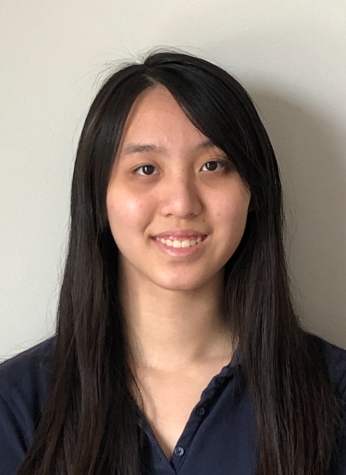
More stories from Chloe Zhao
My Choral Coach allows directors to share sheet music and sound files with choir students.
As students return back to school under the Low Density Campus Plan, an abrupt return to virtual learning remains possible in these uncertain times.
Although some rehearsals are taking place on campus, performing ensemble directors are continuing their use of online music programs to accommodate the new schedule.
“We’re here for our students, we are here for the community,” Band Director Nicholas Thomas said. “I would just want everyone to know that we are working hard to bring music back to St. John’s.”
A key component to online engagement for performing ensembles are apps such as SmartMusic and My Choral Coach that provide live pitch and rhythm feedback on student recordings. These platforms also let teachers share sheet music and sound files with students, allowing them to practice independently.
“In a way it’s cool because I can hear the students one-on-one, which is something I normally don’t get to hear,” said Brendan Emig, director of Les Chanteuses.
Orchestra Director Penny Meitz said that oral feedback from an instructor is critical to the process of learning music. She indicated that SmartMusic’s repertoire is better suited for younger students, so she only plans to use it for Middle School Orchestra.
While ensembles used to meet three times for 45 minutes every seven days, the remote learning schedule only allowed for three 30-minute meetings every 10 days. In the new low density plan, ensembles selected specific dates for their continued morning rehearsals.
Due to potential audio and video lags on Zoom, ensembles were unable to practice in unison during remote learning. For Choir Director Scott Bonasso, the biggest drawback of virtual ensembles was the loss of human connection when performing in person.
Junior Caroline Thames, a Soprano II in Chorale and Kantorei, missed singing alongside other musicians.
“The most important aspect is blending and adjusting our sound together to sound good as a whole,” Thames said.
Despite the obstacles, Kantorei is preparing a virtual performance project similar to the video they made for last spring.
Some music is better than no music — Nicholas Thomas
Sophomore flautist Brandon Lozano struggled to find the balance between engaging in class and remaining considerate to the rest of his household. Lozano sometimes placed a towel under his door to muffle the noise.
“The biggest thing I have to do is make it so that people outside my room don’t have to deal with my sound,” Lozano said.
Junior violinist Nyla Hartigan appreciates the freedom to grab a snack or drink while she’s learning from home, especially with no commute “unless you are going downstairs.”
Ensuring that the technology functions properly is a challenge for fine arts teachers, yet they are determined to keep students engaged. Thomas says that despite these obstacles, they will find a way to give students a learning experience, virtually or in-person.
“Some music is better than no music,” Thomas said.

Lydia ('23) joined The Review in 2019 as a freshman. She staged a coup on the Dungeons & Dragons Club in 2021 and is now its ruthless dictator....

Chloe is a senior in her fourth year on Review. She enjoys boba tea and analyzing films in her free time.
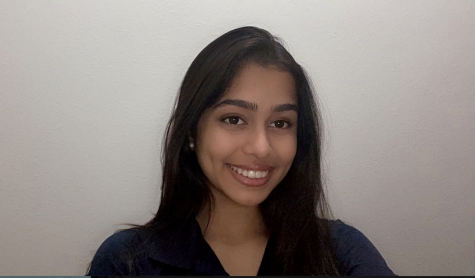
Fareen Dhuka is a senior in her fourth year on Review. Her dream vacation is going to Disney World with Laney and she can't stop making overnight oats.
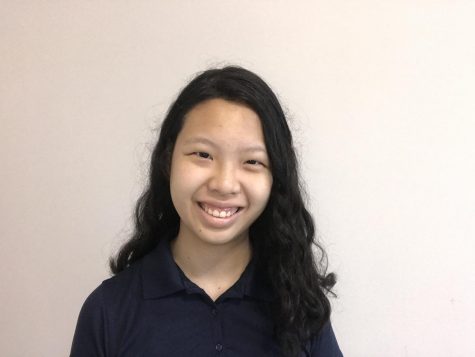
Laney is a senior in her fourth year on Review. She likes baking cinnamon rolls (for Fareen) and is reminded too often of her peanut allergy.

